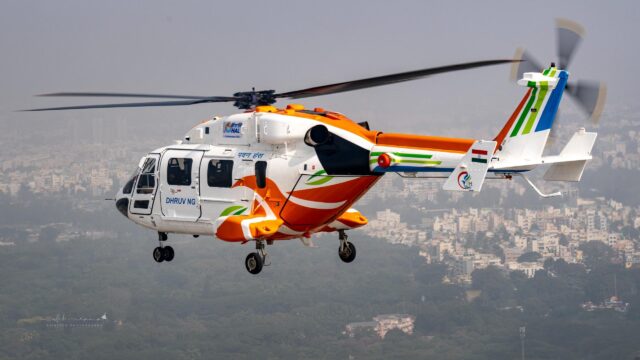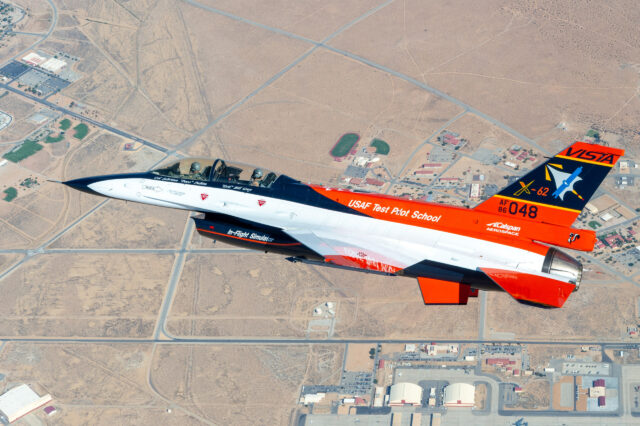Climate concerns see Seattle residents protest Blue Angels ahead of SeaFair: Is the USAF doing enough to go ‘green’?

July 27, 2025

In 2023, the USAF stated it was obligated to reduce emissions and targeted 2046 for net-zero emissions. Now, Trump is working to roll back Federal emissions targets across the board. At the same time, residents in Seattle are protesting the Navy’s Blue Angels for being environmentally unfriendly, so what is the DoD doing about the emissions of military aviation?
Military aircraft in an age of net-zero pledges
Ahead of the United States Navy’s Blue Angels performance at the Seafair show, The Seattle Times is reporting locals protesting with a new billboard reading “Say no to Blue Angels.” It adds the Airshow Climate Action coalition has hung up signs saying “Demilitarize Seafair.”
“The sheer amount of carbon emissions the Blue Angels create — 670 tons in one weekend— is immense and wasteful on top of being a big display of U.S. militarism”
— Time Out of Joint (@stupice) July 25, 2025
“SAY NO TO BLUE ANGELS!” billboard in S. Seattle paid for by former Mercer Islander
h/t @clarkhumphrey pic.twitter.com/CVOhOoCelQ
By 23rd July, a community organiser in Seattle, Kimberly Larson, had gathered more than 5,000 signatures calling for the end of the Blue Angels at the show.
Fox News ran a story about one disgruntled woman suing the Blue Angels for “state-sanctioned acoustic torture.”
Lauren Ann Lombardi claims the noisy F/A-18E/F Super Hornet jets terrorised her cat, Layla, in its final days. Lombardi was eventually blocked from commenting on the Blue Angel’s Instagram page.
One of her comments read “Stop with your F—— b——- you are terrorising my cat and all the other animals and wildlife.” Another message read, “Nobody gives a f— about your stupid little planes.”
The Blue Angels perform around 60-70 shows annually, attracting huge numbers of spectators, and are extremely popular across the nation.
Seafair is an annual summer festival in Seattle with various citywide celebrations. Notable events include the Torchlight Parade, the Seafair Cup hydroplane races, and an air show that normally features the Navy’s Blue Angels.

The Blue Angels include six Navy and one Marine Corps demonstration pilots. They fly Super Hornets and are supported by the C-130J Super Hercules tactical airlifter. It is the second-oldest formal aerobatic team in the world, having been formed in 1946.
The push for fuel efficiency in military aircraft
As momentum builds around the world to decarbonise transportation, from cars to ships to aircraft, how is this affecting the world’s military aviation?
In a certain sense, all air forces, along with all commercial airlines, have wanted to reduce emissions from the very beginning. For commercial airlines, it translates to lower fuel expenses, which makes a big difference to their bottom line.

In the military, more efficient aircraft (and, coincidentally, more environmentally friendly) translate to aircraft with greater ranges, greater available payloads, and smaller logistical supply chains. All very appealing attributes for defence.
The relative fuel efficiency of an aircraft is one of the paramount concerns of airlines when ordering new airliners and choosing when to retire old aircraft.
The US Air Force is going net-zero by 2046
The US Air Force’s goal is to reduce emissions by 50% from 2008 levels by 2033 and achieve net-zero emissions by 2046. Internationally, the UK’s Royal Air Force has set 2040 as its goal to achieve net-zero emissions.
In 2023, the USAF reported on its Department of the Air Force Climate Campaign Plan. It said its three overarching priorities are:
- To maintain air and space dominance in the face of climate risks
- To develop a climate-informed workforce whose decisions build a climate-resilient force and reduce climate risk
- To optimise energy use and pursue alternative energy sources

The Air Force is building solar-powered infrastructure around its bases and is currently looking into applications for the future use of eVTOL aircraft.
Its Climate Campaign Plan form the backbone of environmental measures at USAF. The force says adapting to climate change challenges will “be critical to meet our national security obligations.”
“Our natural environment has become more dynamic due to the effects of global climate change,” the document reads. It adds that USAF bases are increasingly impacted by the effects of climate change.
“We cannot launch or recover aircraft on a flooded runway, nor can we operate from installations devastated by hurricanes and wildfires,” the USAF says.

It is unclear if the Air Force will maintain its goal to be net-zero by 2046, given the climate-sceptic Trump Administration. Trump has taken aim at the Environmental Protection Agency (EPA) to roll back climate measures.
In July, the Columbia Law School stated, “President Trump issued an executive order aimed at dismantling many of the key actions that have been undertaken at the federal level to address climate change.”
Time will tell if this will be a permanent or long-lasting change in federal policy. Trump’s term is limited to four years, and the US Federal Government has flip-flopped on environmental protection and emission reductions with successive administrations.
What’s the US Navy doing to reduce its emissions?
In 2010, during the Obama Administration, the US Navy announced it was celebrating Earth Day by “showcasing a supersonic flight test of the ‘Green Hornet,’ an F/A-18 Super Hornet strike fighter jet powered by a 50-50 biofuel blend over the Patuxent River.”
Today I am rescinding the Biden Administration’s Navy Climate Action 2030 program.
— Secretary of the Navy John C. Phelan (@SECNAV) April 22, 2025
We need to focus on having a lethal and ready naval force, unimpeded by ideologically motivated regulations.
Our goal is Peace through Strength. pic.twitter.com/FwoRzm5Le0
The test attracted hundreds of onlookers, including Navy Secretary Ray Mabus, who the Navy said “has made research, development and increased use of alternative fuels a Navy priority.”
In 2016, CBS News wrote, “In 2009, Mabus committed the Navy to 50% usage of alternative fuels by the year 2020.”
It’s now 2025, and it doesn’t appear the Navy has reported on increasing its use of biofuel for more than a decade. In April 2025, the Navy announced it was rescinding the Biden Administration’s Navy Climate Action 2030 programme.
In fact, the entire US military is no longer chasing climate change targets under the current administration. According to Fox News, in April, Department of Defense (DoD) Secretary Pete Hegseth wrote,
“The Dept of Defense does not do climate change crap. We do training and warfighting.”
According to the Heartland Institute, the US military is the largest institutional user of petroleum-derived fuel in the world. It is estimated that the DoD uses 4.6 billion gallons of fuel each year, with 56% consumed by the Air Force.

Royal Australian Air Force (RAAF) has integrated climate risk into its strategic planning and is exploring microgrids at northern bases exposed to cyclones. The Luftwaffe (German Air Force) participates in EU-wide military decarbonisation goals and is trialling electric tow tractors and biofuels.
In the United Kingdom, the aim is to be net-zero by 2040. Initiatives include Project MARTIN to explore hybrid aircraft and partnerships with sustainable aviation fuel (SAF) producers in the UK.
Both the US Air Force and the Royal Air Force have conducted successful test flights using SAF. The RAF flew a Voyager powered by 100% SAF in 2022, and the USAF has used blends in tankers and transports.
The next generation of fighter jets will be even more efficient
Forthcoming 6th-generation fighter jets are expected to be significantly more fuel-efficient than their 5th-generation predecessors, but with important caveats: Efficiency improvements will stem largely from advanced propulsion systems, aerodynamic design, and systems integration, but whether this translates into lower emissions depends on how they’re used and what fuels they burn.
One of the most anticipated changes in sixth-gen fighters is the adoption of adaptive cycle engines, such as GE’s XA100 and Pratt & Whitney’s XA101, being developed under the US Adaptive Engine Transition Program (AETP).
The US Air Force says adaptive engines could deliver 25% better fuel efficiency, 10% more thrust, and significantly greater range.

Next-generation fighter jets, like the UK, Italian and Japanese ‘Tempest’, are being designed with an electrically intensive architecture, meaning far more of their systems—avionics, weapons, sensors, flight controls—will be powered by electricity rather than hydraulics or bleed air.
6th-gen fighters will also benefit from better aerodynamics and materials, such as blended wings, lighter composites and internal weapons bays to reduce drag.
Even with a 25% fuel efficiency improvement via the adaptive cycle engine, burning fossil fuels still contributes to the problem. Increasing the supply of SAF and certifying 6th-generation aircraft to use it will still be paramount to a meaningful decrease in emissions.
















